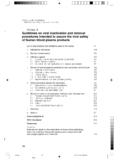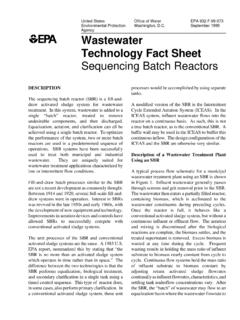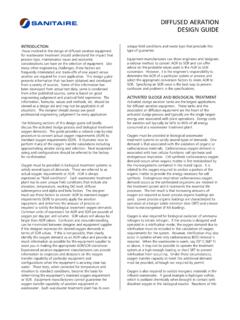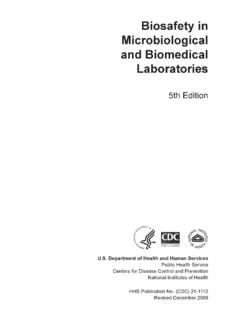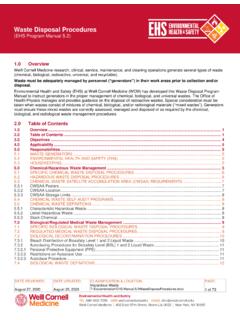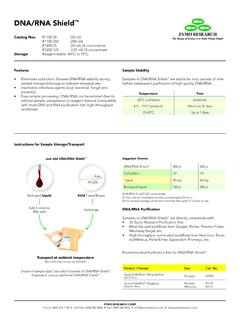Transcription of Biological Bases of Behavior
1 IDDeveloped and Produced by the Teachers of Psychology in Secondary Schools (TOPSS) of the American Psychological Association, August 2012 Biological Bases of Behavior a seven-day unit lesson plan for high school psychology teachers Debra Casado, Nancy Fenton, Dawn Framstad, Rhinehart Lintonen, Patrick MacLaughlin, Madeline Noakes, Meghan Percival, Kathleen Woods, and Hilary Rosenthal, 2007 Revision Committee James Kalat, PhD, North Carolina State University, Raleigh, NC, Faculty Consultant 18/21/12 11:24 AMiv Biological Bases of Behavior a seven-day unit lesson plan for high school psychology teachers This unit is a revision of the original TOPSS Unit Lesson Plan on Biological Bases of Behavior , written by Blaine Adams, Elizabeth Berry, Gerald Blackstone, Betsy Fuqua, Lorrilee Geraci, Roger Hazzard, Joseph Lamas, Rhinehart Lintonen, Laura Maitland, Bates Mandel, Michael Riley, Pat Rowan, Ron Thornton, and Robert Windemuth; original unit edited by Laura Lincoln Maitland, W.
2 C. Mepham High School, Bellmore, NY. The unit is aligned to the following content standards of the National Standards for High School Psychology Curricula (APA, 2011): Standard Area: Biological Bases of Behavior Content Standards After concluding this unit, students understand: 1. Structure and function of the nervous system in human and nonhuman animals 2. Structure and function of the endocrine system 3. The interaction between Biological factors and experience 4. Methods and issues related to Biological advances Please refer to Appendix A to see how sections of this unit lesson plan align with APA s National Standards (APA, 2011). The authors of this unit lesson plan want to mention that high school psychology teachers need not present all the content in this document in the high school course. Please refer to the National Standards as to which content should be presented in the high school psychology course.
3 The authors thank W. Jeffrey Wilson, PhD, of Albion College; John Billingslea of Dulaney High School (Timonium, MD); J. Timothy Cannon, PhD, of The University of Scranton; and Jeffery S. Mio, PhD, of California State Polytechnic University, for their reviews of this document. v contents 1 Procedural Timeline 3 Content Outline30 Activities 45 Resources 51 Critical Thinking Questions 53 Appendix A: Alignment of Biological Bases of Behavior Unit Lesson Plan to the National Standards for High School Psychology Curricula (APA, 2011) 55 Appendix B: Comments on the Relationship Between Neurotransmitters and Abused Drugs 56 Appendix C: Evolutionary Influences on BehaviorThis project was supported by a grant from the American Psychological Foundation. Copyright August 2012 by the American Psychological timelineprocedural outlineLesson 1: Techniques to Learn About the Brain and Neural Function Lesson 2: The Neuron Unit of Structure and Function of the Nervous System Activity 2: Neurons and Impulse Conduction Lesson 3: The Organization of the Nervous System Activity 3: Brain & Nervous System Metaphors Lesson 4: Localization of Function of the Human Brain Activity : Mini-Project: The Brain Activity : Biopsychology BINGO Lesson 5: Lateralization of Function of the Human Brain (Split-Brain) Activity 5: The Split-Brain Students Lesson 6: The Endocrine System Lesson 7: Behavioral Genetics 3 LESSON 1.
4 TECHNiqUES TO LEARN ABOUT THE BRAiN AND NEURAL FUNCTiON As technology has improved, scientists have used a wide range of techniques to learn about the brain and neural function. There are three fundamental ways to study how the brain functions: lesion, stimulation, and recording. i. Greek philosophers and physicians linked the mind with the brain. A. Hippocrates (460-377 ) said that emotions, thought, and mental health arise from the brain (Plato agreed 427-347 ). B. Galen (circa 130-200 ) thought that fluids of the brain in ventricles were responsible for sensations, reasoning, judgment, memory, and movement. ii. Franz Gall (1758-1828) and Johann Spurzheim (1776-1832) incorrectly related bumps and depressions on the surface of the skull with personality traits and moral character. This study was known as phrenology.
5 Later researchers explored localization of functions in the brain with more systematic research. iii. Studying patients with brain damage linked loss of structure with loss of function. A. Phineas Gage was the level-headed, calm foreman of a railroad crew (1848) until an explosion hurled a tamping iron through his head. After the injury destroyed major parts of his prefrontal lobes, thereby severing connections with his limbic system, Gage became volatile. content outlinecontent outline4 His localized brain injury and subsequent change in Behavior helped researchers identify areas of the frontal lobes as being instrumental to the mediation and control of emotional Behavior . B. Paul Broca (1824-1880) performed an autopsy on the brain of a patient named Leborgne (aka Tan) who had lost the capacity for speech with no paralysis of the articulatory tract and no loss of verbal comprehension or intelligence.
6 Tan s brain showed damage to the left frontal lobe, as did the brains of several similar cases, relating destruction of Broca s area to expressive aphasia (1861). Carl Wernicke (1848-1905) similarly found that an area in the temporal lobe of the left cerebral hemisphere is important for language comprehension. C. Gunshot wounds, tumors, strokes, Alzheimer s disease, Korsakoff s syndrome (amnesia caused by B1 deficiency related to malnutrition or alcoholism), and so on enabled further mapping of the brain. iV. Producing lesions (damaging the structure) at specific brain sites enabled systematic study of loss of function resulting from surgical removal , severing of neural connections, or destruction by chemical or electrical applications. Ablation is the removal of a structure. The vast majority of lesion studies are with laboratory animals (although occasionally, surgeons must remove some brain structure in humans to remove a tumor).
7 The procedures in nonhuman animals are done only after thorough review by Institutional Animal Care and Use Committees (IACUCs), which ensure that the work is ethical and pain will be minimized. V. Examination of neural tissue led to the understanding of the neuron as the basic unit of structure and function of the nervous system. Santiago Ramon y Cajal (1852-1934) perfected a selective silver staining technique developed by Camillo Golgi (1843-1926) to examine single neurons. Cajal described the structure of a neuron and noted that each cell was distinct from the next instead of merging into it. Vi. Direct electrical stimulation of the brain provides another way to test the functions of certain brain areas. A. Wilder Penfield (1952) used an electrode to localize the origin of seizures in patients. Stimulating different cortical areas, such as the back of the frontal cortex, at particular sites caused movement for different body parts, enabling mapping of the motor cortex.
8 B. Walter Hess (1955) inserted electrodes more deeply into the brain of nonhuman animals that were under anesthesia. After they recovered from the surgery, he related start/stop functions with specific brain structures. Examples are the start eating and stop eating functions associated with areas of the hypothalamus. Vii. An EEG (electroencephalogram) is an amplified tracing of the activity of a region of the brain produced when electrodes positioned in direct contact with the scalp transmit signals about the brain s electrical activity ( brain waves ) to an electroencephalograph machine. The amplified tracings are referred to as evoked potentials when the recorded change in voltage is the result of a response to a specific stimulus presented to the subject. content outline5 EEGs have been used to study the brain during various states of arousal (such as sleeping and dreaming), detect abnormalities (such as deafness and visual disorders in infants or epilepsy), and study cognition.
9 Viii. imaging techniques in widespread use provide images of brain anatomy. A. CAT scan (also called CT) computerized axial tomography 1. A CAT scan creates a computerized image of X-rays passed through various angles of the brain showing two-dimensional slices that can be arranged to show the extent of a lesion. 2. The procedure may involve injection of a contrast dye and involves shorter periods of scanning than MRI. Because it does not use magnets, it can be used with patients who have pacemakers or metallic implants. B. MRI magnetic resonance imaging 1. The giant circular magnet in the MRI machine causes the hydrogen nuclei in the water of cells to orient in a single direction. Pulses of radio waves cause the atoms to spin at a frequency and in a direction dependent on the type of tissue.
10 The computer constructs images based on these signals. 2. MRI images are more detailed than CAT or PET scans and can be produced for any plane of view. iX. Some imaging techniques in widespread use have enabled neuroscientists to observe the activity of the brain as it functions. A. fMRI functional magnetic resonance imaging 1. fMRIs capitalize on the ability of MRI scanners to detect a change in oxygen that occurs in an area of heightened neuronal activity. Heightened activity causes the brain to use more oxygen. Therefore, hemoglobin in that area has less oxygen bound to it. Hemoglobin with oxygen reacts to a magnetic field in a different way from hemoglobin not bound to oxygen. 2. fMRI is generally considered preferable to PET because fMRI does not expose the brain to radioactivity. Powerful magnetic fields can pose a mild risk, too, especially if repeated rapidly, but they are less dangerous than radioactivity.










